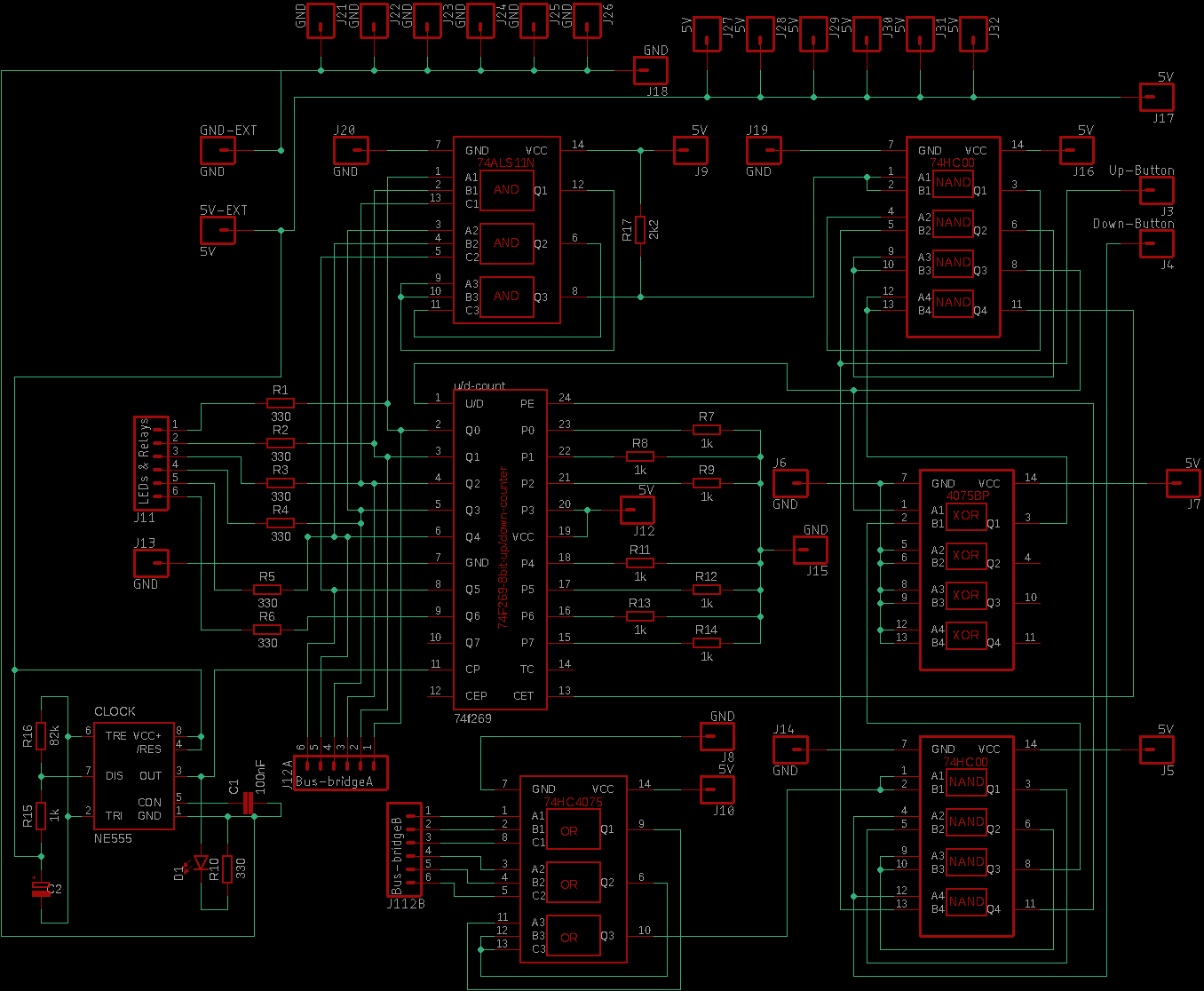I need some practical advice on how to combine different component types.
I designed a circuit with at the heart an up/down counter (74f269) The outputs of the counter are connect to via 330 ohm resistors and leds to ground level. They also need to drive a relay-driver. Furthermore these outputs are connected to a 74ALS11N (3 triple OR-gate) and 74HC4075 (3 triple AND gate). The OR gate yield Q0 v Q1 v Q2 v Q3 v Q4 v Q5. The And Gate Q0 & Q1 & Q2 & Q3 & Q4 & Q5. The outputs of the OR's and AND's are each fed to 74HC00 (NAND).
The NAND gates do an AND operation with the value and that of an NE555 that is used as debounce for a switch. All components are fed from a 5V voltage source.
I read about combing different logic families and am a bit confused about when to use resistors and how many:
- I read connecting TTL to CMOS I need a pull up resistor. The 74ALS11N output connected through a load to ground (pull down). Can I still connect the AND and OR gates to the outputs of this counter?
- Am I correct to assume that I do not need a resistor when an output of a gate is connected to an input of a gate of the same logic family, both for gates in the same chip and in another chip. Nor do I need resistor when CMOS of one type is connected to CMOS of another.
- One NAND drives both U/D of the counter an input of an XOR-Gate (HEF4075BP) do I need resisors and if so pull up or down? Also: can the 74HC00 drive both the input of the counter and XOR gate?
- Do I need a resistor for the output of the NE555 to the NAND-gate?
=========================
As requested in the comments below, I added the schema of the circuit. It's a DIY project so bear with me if the schema is not up to par with industry standards. The strange looking GND and 5V connections on each chip and the bridge were introduced, because Eagle could not route a single sided PCB.
I'll place the soldering pads around the circuits an then connect the GND and 5V of the chips with wires.
The functional purpose of the circuit is to count down and up (6 bits) upon button pushes and have underflow and overflow protection.

